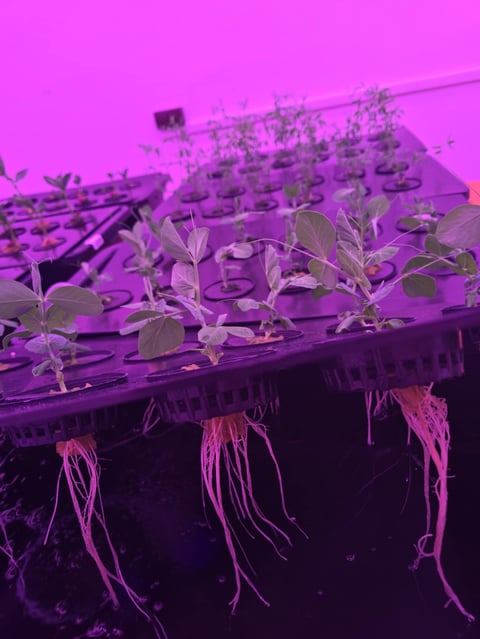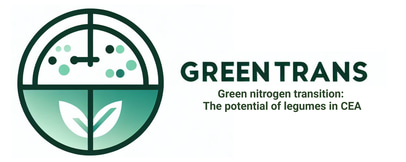Mission
The GreeNTrans project aims to transition synthetic nitrogen fertilizers production to short-chain, reduced greenhouse gas, and circular economy-based technology using the potential of legume plants for biologically fixed nitrogen (BFN). Such a goal will be achieved by adapting plants of the legume family to grow in hydroponic systems and through modelling and experimentation to determine the most suitable conditions for achieving maximum BFN in controlled environment agriculture. The project is provided following the Green Transition aims. Its targets are to investigate (I) the most effective concentration of rhizobia, the parameters of the hydroponic solution (pH, EC, temperature), and the hydroponic system itself (deep float, Ebb, NFT) aiming to find the most efficient way to elicit the most considerable amount of BFN; (II) the influence of allelopathic substances will be studied to increase the reusability of the hydroponic solution, as well as leguminous plants will be incorporated to grow together with leafy vegetables to replace synthetic nitrogen; (III) the quality, productivity, and nitrogen cycle of leafy vegetables will be evaluated, growing them after replacing synthetic nitrogen with BFN in hydroponics and the substrate; (IV) the effects that gave the most reliable result will be assessed and applied in practice on other plants, and a methodology will be created to obtain the highest yield with BFN. Novel approaches proposed by the project will provide a better understanding of the nitrogen cycle in plants, and the estimation of BFN in plants and hydroponic solutions will help to determine the optimal requirements for growing plants and contribute to safer food to ensure higher product quality, consistent yields for farmers, and safer food for consumers. The consortium of the project consists of three leading scientific and research institutions in the fields of agriculture in their countries: Lithuanian Research Center for Agriculture and Forestry (LAMMC, Lithuania), University of Helsinki (UH, Finland), IVL Swedish Environmental Research Institute (IVL, Sweden). The project is organized into 5 work packages, closely related and interacting with each other to cover the full spectrum of activities and to use the advantages of collaboration. The knowledge gained during the project will be presented to stakeholders in the workshops, at scientific conferences, in the scientific and popular press, on the project webpage, and social networks.


Expected results:
Optimized technology for extracting the maximum amount of biologically fixed nitrogen from legumes when hydroponically growing them in controlled environment agriculture (CEA).
Development of a methodology for the incorporation of legumes together with leafy vegetables into cultivation systems to replace synthetic nitrogen with biologically fixed nitrogen.
Three scientific publications in high-ranking open-access journals.
Societal relevance:
Substantial reduction of the cost price of agricultural products, compared to the current situation, after optimizing the production of biologically fixed nitrogen in hydroponics and its application in fields.
Substantial reduction of the cost price of horticultural products after incorporation of legumes in hydroponics growth strategies by replacing expensive synthetic nitrogen with biologically fixed nitrogen.
Growth strategies for a substantially improved yield and nutritional value of fresh food by incorporating legumes. The enhanced quality and expanded usage possibilities will make hydroponic farming more profitable.
People allergic to pesticides will be able to consume legumes grown hydroponically in CEA.
Potential impact:
The use of biologically fixed nitrogen in CEA significantly reduced greenhouse gas emissions in the Nordic-Baltic region.
The free availability of the results data generated during the project will lead to the interest of scientists and farmers and conscious awareness of the consequences of nitrogen fertilizers. Seeking that all results will be published in open-access high-ranking scientific journals and communicated at scientific meetings or conferences.
